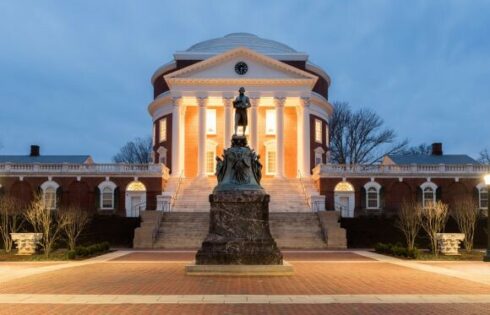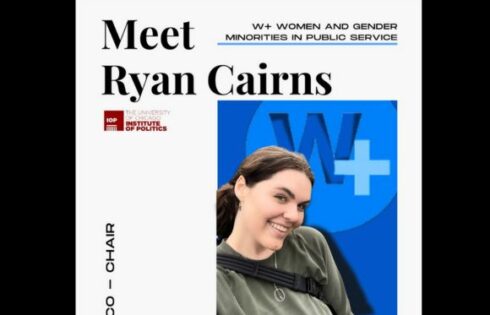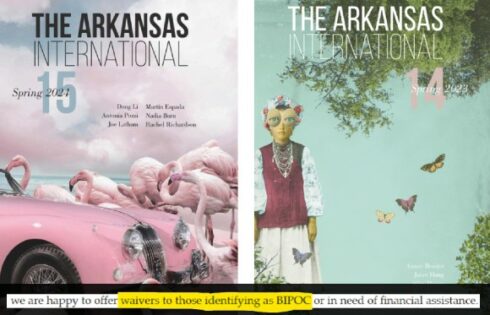
A Fresno, California high school cheerleader’s “blackface” video led to an angry community and some 150 years worth of recollections regarding racist policies.
The incident also showed how so-called “restorative justice” measures don’t apply to white students who engage in racially insensitive pranks.
The Los Angeles Times reports the town “spent its summer vacation talking about racism and white privilege, about youthful mistakes and righteous punishment, about elusive justice and enduring pain” … all because of some teenage high jinks.
Back in May, a white cheerleader at Bullard High School donned blackface and proclaimed on video “Who said I can’t say n – – – a?” Her (mixed-race) peer posted the vid on Snapchat. News soon surfaced that the same girl weeks prior had uttered the N-word after the “egging on” of her friends … and “appear[ed] to happily comply,” the Times says.
The incidents have led to the black cheerleader who reported the videos leaving the school, and promised protests at coming Bullard football games.
Fresno Unified School District Superintendent Bob Nelson called the incidents “horrifically racist and inappropriate,” and then (along with the Times) delved into the region’s past:
“Our community has wrestled with issues of racism and racial tension for decades,” he said. “If you track that history, our community actually began with redlining of various racial groups to restricted parts of the city. And, obviously, that painful legacy still haunts us.
The “truth of the matter,” Nelson said, “is that systemic racism in our community is so universal that it’s almost become normalized.”
That legacy dates to the days when the Central Pacific Railroad was under construction. Fresno Station was completed in 1872, the same year the city was founded. Two years later, when Fresno became the county seat, one-third of its residents were Chinese. …
In the 1930s, the federal government started drawing color-coded maps that rated neighborhoods across the United States on their creditworthiness. Green neighborhoods where whites lived got mortgages. Red and yellow neighborhoods where blacks and Latinos lived didn’t.
The white cheerleader’s parents said Nelson’s reaction made them “hurt” and “angry” as it implied they’re a family of racists.
The white cheerleader retained her spot on the cheer squad after spring tryouts; her black peer did not. The former, a minor, did face consequences for her actions, but the district would not comment on them due to privacy concerns.
Community activist Stacy Williams began a social media campaign to determine the identity of the “blackface” cheerleader, and eventually revealed her name. This resulted in “threats of rape, torture and death” the girl’s father said.
For her part, the black cheerleader faced her own issues: Fellow cheerleaders called her out for reporting the videos.
The white cheerleader took part in “restorative practices” in which she learned about the history and significance of blackface. The JV cheerleading squad “forgave” her; the varsity team, however, didn’t even show up to the meeting.
Things amped up after school board member Terry Slatic held a meeting with the cheerleaders in which he admonished the girls. He said that despite their continued unease with the situation, the whole blackface incident had been “adjudicated, “judged” and “disciplined.”
He later was censured for his actions.
Slatic said the district has a lot more to worry about than a 15-year-old’s blunder: “Is it a problem nationwide? Absolutely,” he said. “Is it a problem unique to Bullard or Fresno? That’s the silliest thing I’ve ever heard.” A member of the cheerleading squad took issue with that statement at special board meeting: “You put salt in the wound,” she told Slatic.
Remember that “restorative justice” measures are highly touted by progressive-minded educators as an alternative to “punitive” actions like detention and suspension. If the cheerleader in question is telling the truth — that she had no idea about the history of blackface (which isn’t hard to believe) — aren’t the restorative measures sufficient?
Or are white students exempt from the practice, most especially if race is involved?
MORE: White students who make racist puns exempt from ‘restorative justice’
MORE: Racial politics is killing public schools
IMAGE: VectorDOTdesign / Shutterstock.com
Like The College Fix on Facebook / Follow us on Twitter






Please join the conversation about our stories on Facebook, Twitter, Instagram, Reddit, MeWe, Rumble, Gab, Minds and Gettr.